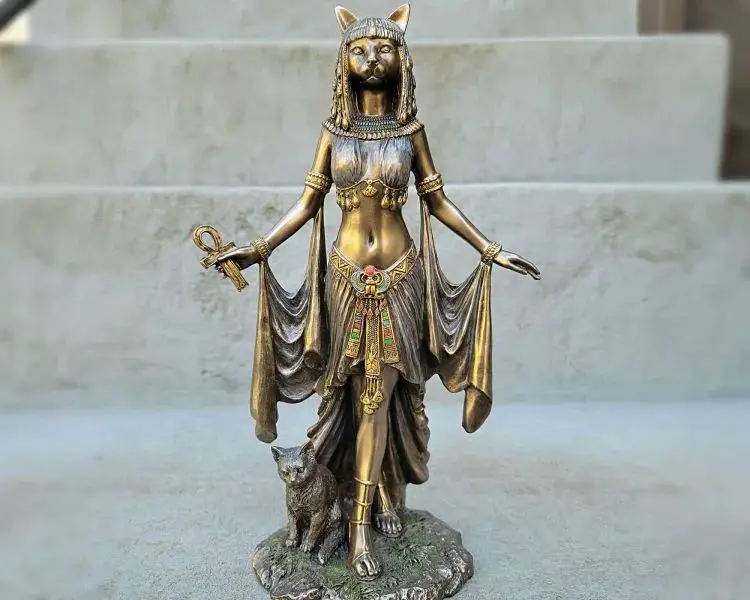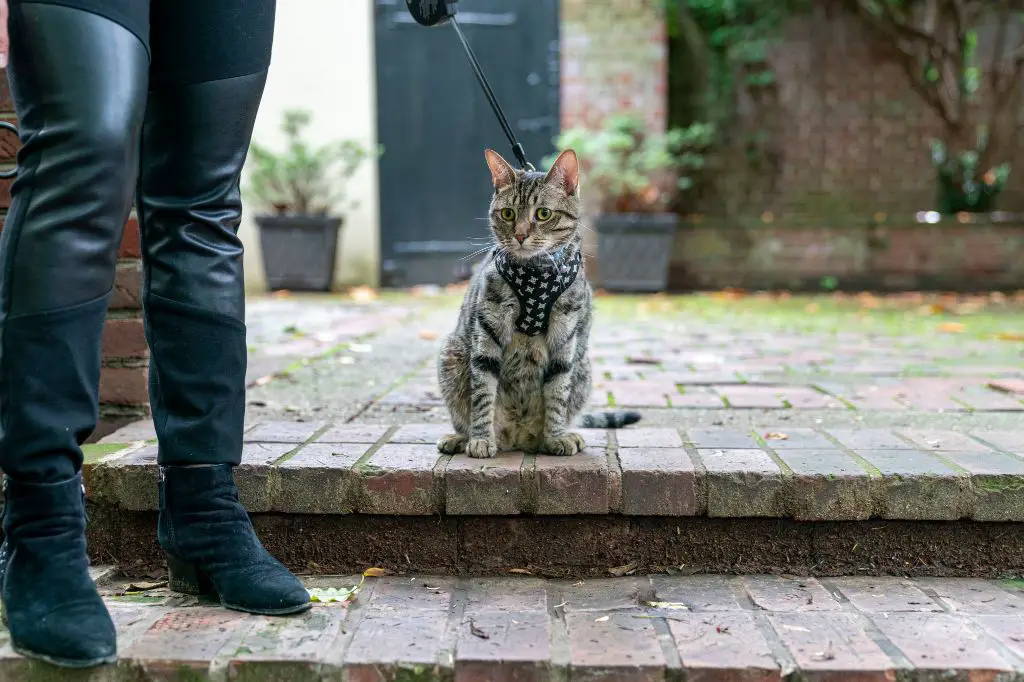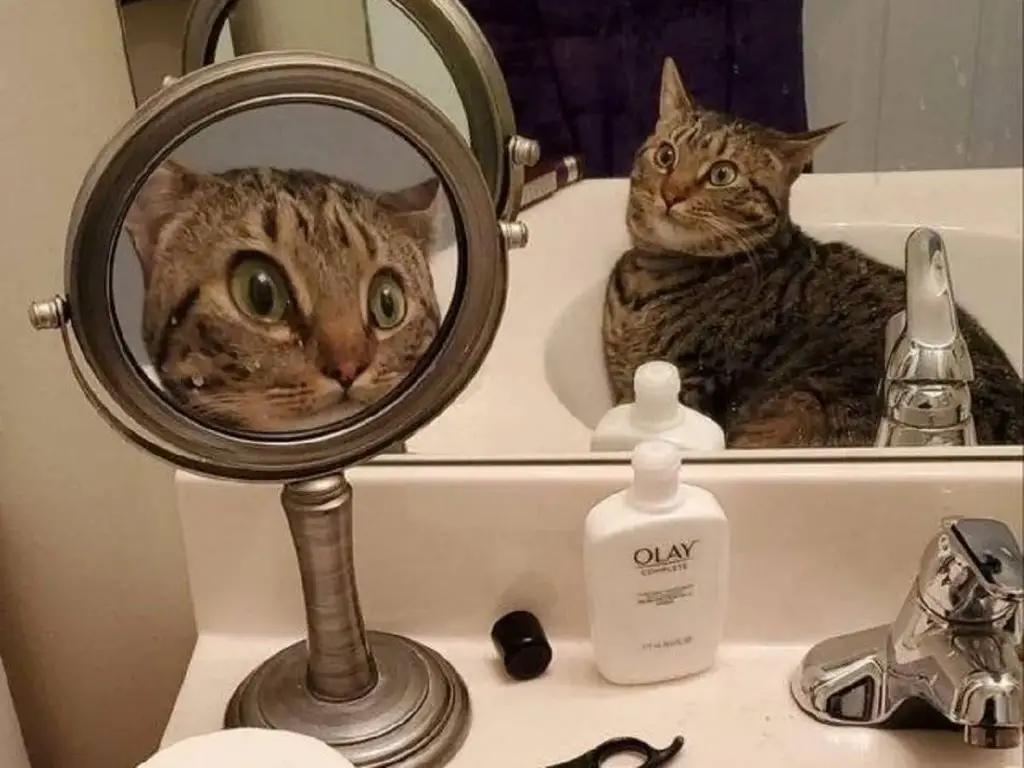Cats have held a special place in human culture for thousands of years. Depictions of cats extend all the way back to ancient Egypt, where cats were revered as gods. This long history has led to the persistent myth that cats have multiple lives. The idea that cats have nine lives in particular has embedded itself in our culture and language. But is there any truth to this myth? Where did this idea come from, and why has it endured for so long?
The myth likely arose from cats’ legendary agility, flexibility, and stealth. Unlike other common domesticated animals like dogs, cats excel at squeezing themselves into tight spaces, landing on their feet, stealthily hunting prey, and simply surviving situations that would kill other animals. Over time, humans projected an aura of magic and mysticism onto the cat’s skill for getting out of trouble unscathed. The myth took hold that cats must have multiple lives to account for their uncanny knack for survival.
While we now understand cats don’t literally have nine lives, the cultural myth endures. We will explore the history of this myth, why it has persisted, and what it reveals about the unique nature of cats.
Origins of the Myth
The idea that cats have multiple lives traces back thousands of years. In ancient Egypt, cats were revered and associated with divinity. Egyptians worshipped the cat goddess Bastet, and killing a cat was punishable by death. When cats died, they were mummified and buried in sacred tombs. This reverence led to a belief that cats had mystical nine lives [1].

Egyptians also linked cats to the sun god Ra, who took the form of the Great Tomcat during his travels through the underworld. Ra was said to have nine incarnations or manifestations, which may have contributed to the nine lives myth [2]. Other Egyptian gods like Mafdet were depicted with cat heads and similarly represented rebirth after death.
In European folklore, tales tell of cats squeezing out of dangerous situations and avoiding death. Their “nine lives” were lives stolen from evil spirits through their craftiness and wit [3]. These fables portrayed cats outsmarting threats, thereby gaining multiple lives or reincarnations.
Scientific Explanation
Cats’ unique physical attributes enable them to frequently survive falls from heights that would severely injure or kill other animals. One key factor is their exceptional agility and reflexes. When falling, cats are able to quickly twist their bodies mid-air and correct their position to land on their feet. According to some studies, even when released completely upside down, cats can right themselves in under 3 feet of fall distance (https://www.wired.com/story/how-can-a-cat-survive-a-high-rise-fall-physics/).
Another advantage cats have is their ability to fit into very small spaces. This allows them to squeeze into tiny nooks, crevices, and hiding spots to escape threats. When falling, they are able to contort their bodies to fit into tight areas that can protect them from impact. Cats are also flexible enough to absorb shocks through their leg joints and muscles.
Cats are remarkably resilient and able to heal quickly from non-fatal injuries. Their loose skin and fur disperses impact and their supple musculoskeletal system prevents fractures. While falls can still cause internal organ damage, if the injuries are not immediately fatal, cats often make full recoveries.
Real Threats to Cats’ Lives
Cats face many dangers that can shorten their lives. According to the VIN veterinary information network, the most common causes of death in cats are chronic kidney disease, cancer, and infectious diseases like FIP (feline infectious peritonitis) (Common Causes of Death in Cats – WSAVA2011). Kidney disease affects up to 30% of older cats and is one of the top “silent killers” that often goes undetected until advanced stages (5 “Silent” Killers of Cats).

Outdoor cats face additional threats like cars, trauma, and poisoning that drastically reduce their average lifespan. Indoor cats live over 10 years on average, while outdoor cats live only 2-5 years on average. Cars and traffic accidents are one of the top dangers for outdoor and free-roaming cats.
Other major diseases that pose health risks for cats include:
- Feline leukemia virus (FeLV) – weakens the immune system
- Feline immunodeficiency virus (FIV) – weakens the immune system
- Heart disease – can lead to congestive heart failure
- Hyperthyroidism – overactive thyroid gland
- Diabetes mellitus – inability to regulate blood sugar
- Dental disease – can cause systemic infections
While cats may have legendary agility, they face many real health threats. Owners can protect cat lifespan by providing preventive veterinary care and keeping cats safely indoors.
Near Death Experiences
Cats have remarkably resilience and seem to have a knack for defying the odds when facing life-threatening situations. There are many inspiring anecdotes of cats surviving against all odds after being declared dead or given little chance of survival by veterinarians. Here are some lucky escape stories of cats who cheated death:
Scarlett was a brave mother cat who saved her entire litter of kittens from a burning building in New York. After firefighters rescued her kittens, she went back into the flaming building two more times to bring out the remaining kittens. Vets said Scarlett had little chance of surviving from severe burns and smoke inhalation, but miraculously she pulled through. (Source)
Willow was a tenacious cat who somehow survived a 35-day, 1,000 mile journey trapped in a shipping container from China to Los Angeles. Vets were astonished that Willow endured over a month without food or water across the Pacific. Though severely dehydrated and malnourished, Willow recovered after her incredible long-distance ordeal. (Source)
Veterinarians sometimes mistakenly pronounce cats dead when they go into deep unconsciousness or comatose states. There are cases where cats have been declared dead and prepared for burial, only to later resuscitate or wake up from comas. Reasons vets can mistakenly think cats have died include the animals’ light body weight, tendency to play dead as a defense mechanism, and ability to survive extreme physiological changes. Owners should get a second opinion before disposing of a cat’s body if unsure it has died. (Source)
The Multiple Lives of a Housecat
To many cat owners and lovers, it can seem like housecats lead multiple lives each day. Their daily routine provides a rich variety of experiences akin to having “nine lives.” Cats exhibit markedly different behaviors indoors versus outdoors, and even at different times of the day.

During the day when their humans are home, cats often sleep, play, or find a lap to cuddle in. They may demand pets and attention or observe household activities quietly from a windowsill or cat tree. At night, especially in multi-cat homes, cats can become more active, engaging in playful chases or exploring the house. According to sources, cats sleep an average of 15-20 hours per day1. Their sleep patterns include both deep sleep and light dozing.
When allowed outside, cats’ lives transform yet again. They experience new sights, sounds, and smells, and have opportunities to climb, hunt, and explore. Outdoor cats interact with wildlife like birds, squirrels, and mice. They may patrol their territory, defending it from other cats. Even indoor cats given outdoor time through a catio or leash walks encounter an enriching change of scenery.
Through play, human interaction, and daily routines, housecats enjoy stimulation and variety in each “life,” even without venturing outside. Their inquisitive nature ensures they fully experience their nine indoor lives.
Cats’ Nine “Lives” Through History
Throughout history, cats have taken on many roles in human society – from revered deities to ominous omens to beloved pets. In ancient Egypt, cats were associated with the goddess Bastet and considered protectors of the home. Killing a cat in ancient Egypt could result in the death penalty. Cats were mummified and buried with their owners upon death 1.
During the Middle Ages in Europe, cats were thought to be connected with witchcraft and evil spirits. Many cats were killed during this time. However, cats were also kept on ships and farms to control rodents. Their mousing skills made them valuable for pest control 2. Over time, the superstitions faded and cats began to be appreciated as pets and companions.
Today, cats are one of the most popular pets worldwide. But many still face threats living on city streets and in shelters. While the standing of cats has changed throughout history, their legendary ability to avoid harm has remained constant. The myth of cats having nine lives likely grew from observing cats survive falls, fights, and close-calls that would have killed other animals.
The Cat’s Perspective
Do cats ponder their own mortality? While we can’t get inside a cat’s mind, some studies provide clues into animal consciousness and whether cats have a sense of self.
Scientists who study animal cognition believe that cats likely don’t comprehend the abstract concept of death or ponder existential questions about life’s meaning. Cats experience the world much more in the present moment compared to humans. According to animal behaviorist John Bradshaw, cats generally lack episodic memory or autonoetic consciousness which allows humans to mentally time travel and ponder the past and future [1].

However, cats do have a sense of self and distinct personalities. Studies show cats can recognize their own reflection and distinguish their own scent from others. Cats also show self-awareness through their ability to utilize their surroundings and solve problems [2]. So while cats may not ponder existential concepts like mortality, they likely have some primal awareness of their individual existence.
Overall, the extent to which cats comprehend and plan for their remaining “lives” remains a mystery. Their experience appears limited to the present moment. While cats can’t ponder life and death like humans, they still cherish their lives and feel grief when those close to them pass away.
Why the Myth Endures
The myth that cats have nine lives endures for several reasons:
First, humans have a desire for animal immortality and resist the idea that our beloved pets’ lives are fragile and temporary. The notion that cats can cheat death appeals to our wish for their perpetual existence.
Additionally, cats are often romanticized in popular culture as aloof, mysterious, and even supernatural creatures. This contributes to fanciful myths about their ability to survive situations that would kill other animals.
Finally, the “nine lives” metaphor resonates with people because it represents cats’ perceived resilience and ability to bounce back from injuries or near-death experiences. Their extraordinary agility and reflexes seem to protect them from falls and other accidents that would seriously harm other pets.
While cats are not immortal, the appealing myth gives comfort and imaginatively extends their presence in our lives. The saying reveals our affection for cats and reluctance to accept their mortality.
Conclusion
Throughout history, humans have invented tales and myths to explain the mysteries of life. The idea that cats have nine lives is one such enduring fiction that has its roots in ancient Egyptian beliefs, English folklore, and our own hopes and fantasies about our feline companions.
In reality, of course, cats are as mortal as any living creature. They face numerous threats from cars, diseases, predators, and other hazards that frequently cut their lives tragically short. However, cats do possess unique physical and behavioral attributes—such as acute senses, lightning-fast reflexes, and a remarkable ability to twist in mid-air and land on their feet—that increase their odds of surviving falls and injuries that would kill other animals.
While the nine lives myth overstates cats’ invincibility, it speaks to their very real adaptability and resilience. This, along with their beauty, affection, and air of mystery, has earned cats an enduring place in the human imagination. The nine lives idea persists because it reflects our awe and admiration for these remarkable creatures that have walked alongside us for thousands of years. Though cats cannot truly cheat death, their rich mythology reminds us to appreciate the wonders of the animals we love.

